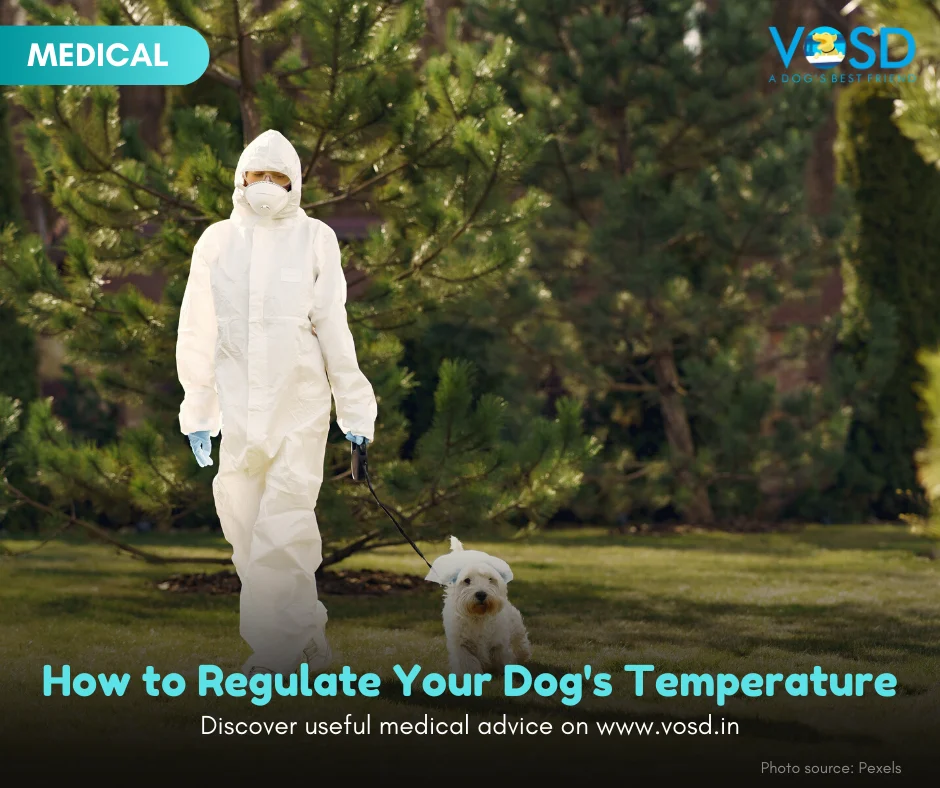Is your dog’s temperature too high or too low?
As a dog parent, it’s important to know how to be able to adequately care for your dog even if a veterinarian isn’t accessible. Especially now, when it’s hard to get medical care, it is useful to have an understanding of our dogs’ health.
We have provided a few ways you can do this. Your dog is like a child, but there are key differences and ways to care for them.
Dogs have a different normal body temperature than humans
Unlike humans, the normal temperature of dogs is 99-102 degree Fahrenheit. If the temperature is a little higher, say 102-104, please call your vet. The vet will treat the dog for the underlying cause that is causing the fever and the fever itself.
In case the fever is very high (105+), you may be required to take action before reaching the vet. Sustained fever at these levels can cause brain damage and the breakdown of the regulatory mechanism through which the brain regulates body temperature – ultimately causing death. Several steps can be taken to reduce very high fever.
A Sneak Peek into Our Charity for Dogs – VOSD has rescued 8,000+ dogs, given 250,000+ state-of-the-art free treatments
What you can do
If your doggo is heating up, first apply ice packs on the head and on the sides of the body above the lungs.
If ice packs can be applied using a wet towel, wrap the dog like a burrito and keep a fan on to cool the dog. Avoid making the dog wet with water because a sustained fever compromises their ability to manage temperature. If the dog is wet and the temperature is low you will find it very difficult to raise it and it will keep falling.
Administering injections
You might need to give your dog an injection if the first step doesn’t work. An injection of a common vet antipyretic such as Melonex 1ml/10-20kg bodyweight depending on the temperature range. This is generally administered subcutaneously. Please remember that human antipyretics such as paracetamol are generally not administered to dogs other than in very small quantities so please do not do so.
Keep a close eye on your dog’s recovery
It is always a good idea to keep checking the temperature of the dog you suspect a fever. Keep a record of improvements or problems.
In case the temperature is low (below 99°F) please treat this as critical.
What if your dog’s temperature is too low?
Usually, this means your dog has a disease that has severely compromised its blood values such as in the case of tick fever or anemia. Both these conditions can go undetected for weeks. They are generally found when the dog stops eating completely and/ or the temperature is fallen below normal.
Another reason is over treatment. If your dog has had a very high fever and has been wet with water for too long the temperature might started falling below normal.
Some basic emergency procedures
Temperature below normal is critical and has to be raised. The following emergency procedures may be adopted:
Wrap your dog in a blanket and keep checking the temperature every five minutes, to see that the temperature does not rise.
Keep the dog warm with a warm water bottle wrapped in a towel such as to maximise the contact area of the dog and the bottles. This is preferable to radiation methods like using a convection heater or a lightbulb which can cause shock or burns. Constantly check temperature at regular intervals.
The best way to provide heat this way is to keep your hand in contact close to where the heat is touching the dog. If it is too hot for you, it is too hot for him. Keep moving the contact area. Keep checking the temperature.





